Ten Years of Optical Evolution in AR Glasses: The Next Era Has Arrived
![]() 11/19 2024
11/19 2024
![]() 609
609
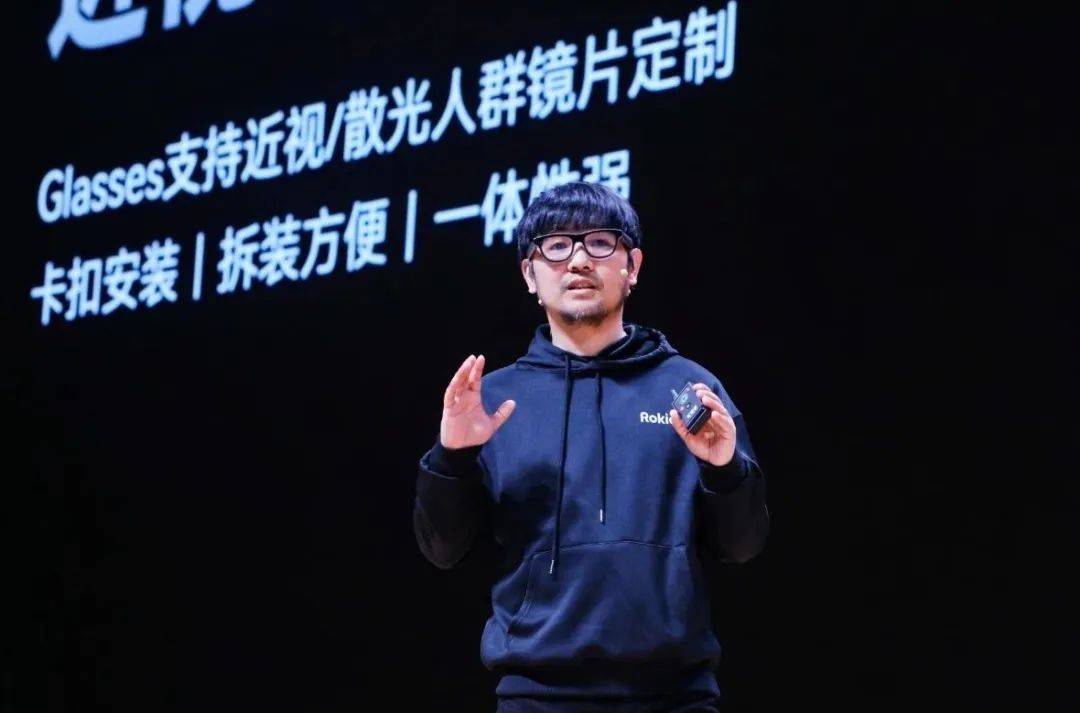
Produced by | Bullet Finance
Art Director | Qianqian
Reviewed by | Songwen
Imagine a day when you can wear a pair of ordinary-looking glasses, just like the protagonists in sci-fi movies, and instantly see various online information, unconstrained by scenarios, allowing you to watch movies, entertain, and work anytime, anywhere. Meanwhile, your view connected to the real world remains unobstructed.
Rokid has now taken this unique 'imagination' a step further.
On November 18, Rokid Jungle 2024 Partner and New Product Launch Conference was held in Hangzhou. At this conference, Rokid unveiled a new generation of AR glasses, Rokid Glasses, in collaboration with Bolon.

Unlike split-type AR glasses, the newly launched Rokid Glasses resemble everyday eyewear, making wearers barely feel their presence.
Moreover, Rokid Glasses utilize light waveguide technology. Upon wearing them, you'll notice a virtual screen appearing in front of your real-world scene, with virtual images overlaying the real environment, without affecting your normal field of view.

Before the release of Rokid Glasses, the AR glasses market had already seen intense competition. From last year to this year, the emergence of Apple's Vision Pro accelerated the popularization of the AR concept, and various domestic AR products were successively launched.
However, tracing back to consumer perception, it cannot be denied that AR glasses have not yet become an indispensable part of people's daily lives.
Ultimately, this is because in exploring the essence of user 'bodily sensation,' no AR glasses have yet been able to balance multiple bodily demands for simplicity, flexibility, and convenience, nor have they achieved sufficient quality in content ecosystems.
The emergence of Rokid Glasses is breaking this stalemate.
1. Ten Years of Evolution
The development of AR over the past decade has exceeded imagination.
It entered the consumer market in 2012 when Google launched the first AR glasses, Google Glass, a landmark event in the AR industry.
Subsequently, China also entered the AR exploration phase, with numerous related manufacturers emerging. Many companies entered the AR industry, investing in various dimensions such as display modules, light waveguide technology and production, integrated production of complete machines, and software ecosystems, resulting in many impressive products.
In the popularization of AR, iterative upgrades in AR product hardware and software are crucial indicators. A notable trend is the transformation of AR products from 'helmets' to 'glasses.'
Accompanying the update in device form factors, some AR star enterprises have come to the forefront and gained recognition, with Rokid being one of them that cannot be ignored.
Taking Rokid's device updates as a window, we can observe the changes in the AR industry over the past decade.

Rokid Glasses are Rokid's first AI+AR glasses with an integrated design this year. Unlike Rokid's previous split-type AR glasses, Rokid Glasses concentrate components like the motherboard and battery within the glasses, resembling everyday eyewear.
If not observed from inside the lenses, it looks no different from regular glasses. Even when used as everyday glasses, Rokid Glasses support customized lenses for nearsighted and astigmatic individuals, making them a direct replacement for nearsighted glasses.

The integrated design means that upon wearing the glasses, the lenses can display information from the virtual world without detaching the user from the real world, allowing the glasses to integrate into a wider range of life scenarios.
They receive messages from DingTalk, WeChat, and other platforms anytime, anywhere, display weather conditions, and can play music, provide navigation announcements, and conduct voice calls during sports or cycling.

Additionally, with access to the Tongyi Qianwen large model and equipped with a 1200w camera, Rokid Glasses also have photo and video capabilities, even the ability to solve math problems and estimate food calories.
In terms of design, Rokid Glasses collaborate with Bolon, featuring a classic and fashionable style. They use magnetic charging, with the glasses case serving as a charging dock. Simply placing the glasses in the case initiates automatic charging. The case can fully charge the glasses ten times, with 90% charge in just ten minutes and a full charge in twenty minutes.
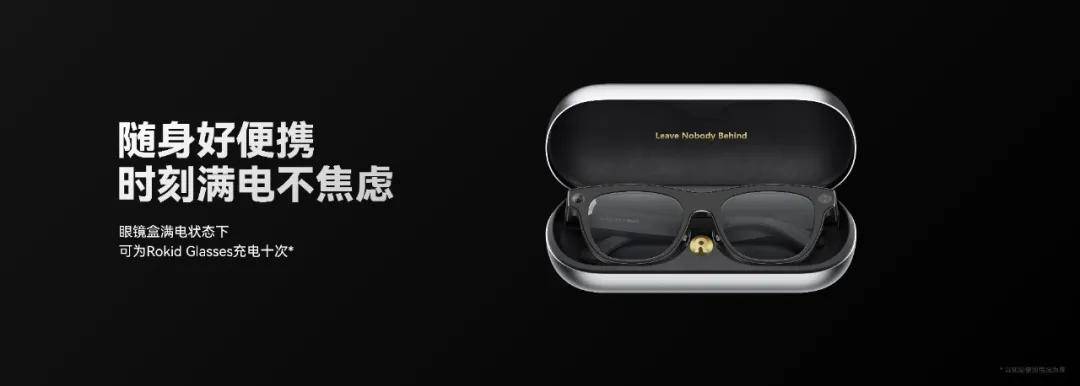
It is worth mentioning that amidst the current focus on AI glasses, Rokid Glasses have taken the lead, demonstrating robust AI integration capabilities.
By integrating Alibaba's Tongyi Qianwen multimodal large model, Rokid Glasses support functions such as making and receiving calls, AI question-and-answer searches, AI object recognition, AI photo answering, AI multilingual translation, AI navigation, AI transcription, AI health reminders, and more.
Furthermore, by supporting AI quick replies, Rokid Glasses can filter important messages for real-time reminders and filter out unimportant ones.
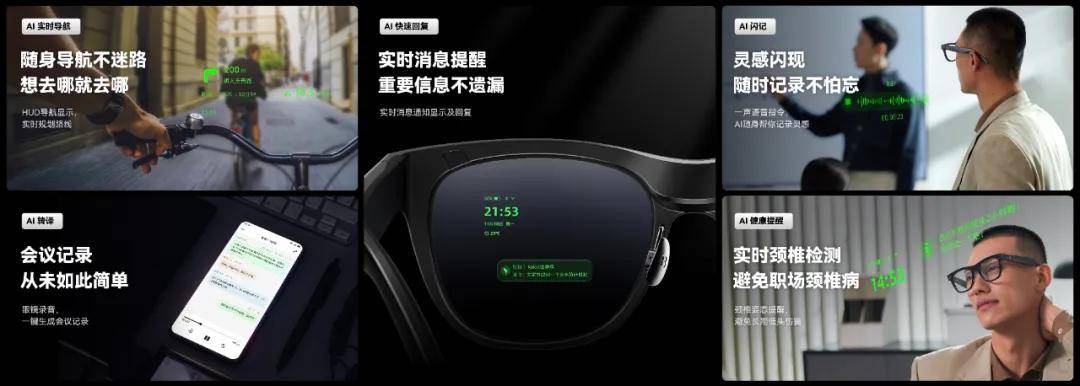
It can be seen that in various scenarios such as learning, entertainment, work, travel, and photography, Rokid Glasses' capabilities are integrating into consumers' daily lives, becoming an electronic product as important as a mobile phone.
Rokid Glasses represent Rokid's latest achievement in exploring AR glasses form factors, but in reality, the launch of each past product has been a product of Rokid's leadership in technological trends.

From focusing on mobile scenarios like movie-watching and light office work, pioneering the first 'Air' glasses, to experimenting with more challenging monocular camera solutions in AR glasses, and now integrated AR glasses using light waveguide technology, Rokid has never stopped exploring technological heights.
Meanwhile, from a consumer perspective, Rokid's founder & CEO Misa believes that compared to mobile phones, consumers' personalized demands for AR glasses will be more pronounced.
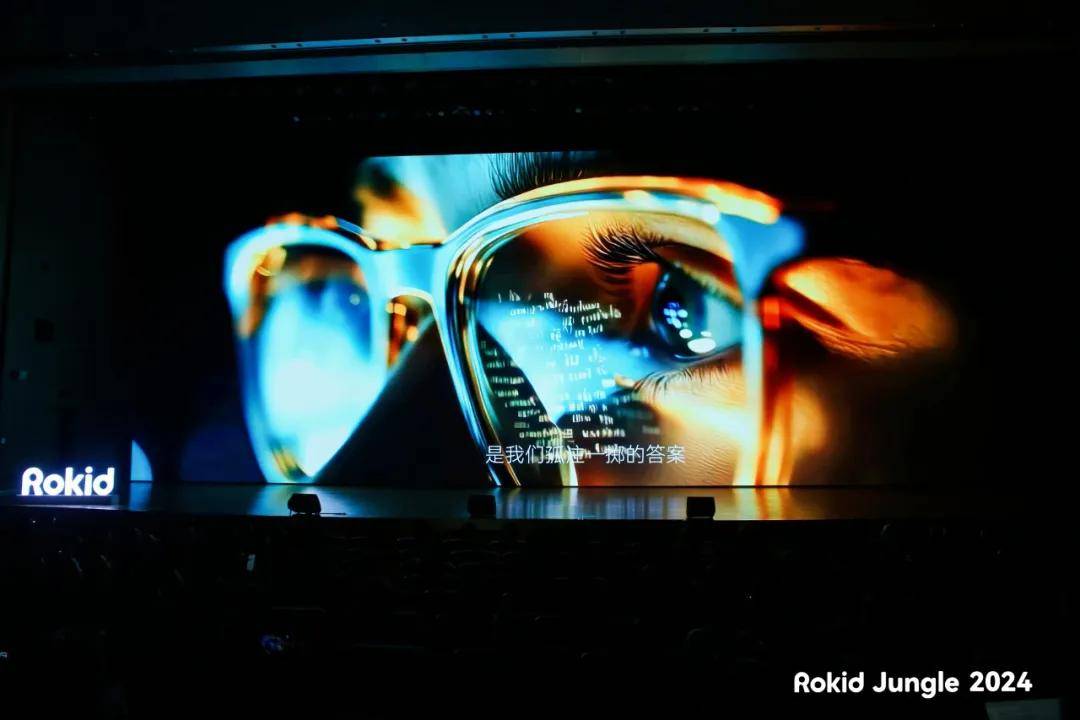
The release of Rokid Glasses signifies that Rokid has now completed a comprehensive layout of both split-type and integrated products. Under the Rokid brand, the iteration of new products can satisfy the demands of different consumers, enabling them to choose the most suitable option based on their needs.
2. Light Waveguide: The Final Piece of the AR Future Puzzle
In the consumer-grade AR glasses market, when Rokid decided to adopt a split-type design, the form factor of consumer-grade integrated AR glasses was still limited to 'helmets.' Many consumers wondered: How could a heavy and bulky 'helmet' be worn outside?
The design of Rokid's split-type AR glasses alleviated the hesitance of C-end consumers due to product size and weight at that time, allowing the C-end market to start re-embracing AR glasses as a category.
Meanwhile, Rokid has never ceased exploring integrated designs, internally determined to overcome the challenges of 'heaviness and bulkiness' in consumer-grade integrated AR glasses.

The challenge that cannot be avoided in solving this problem points to optical display technology, which is also a crucial factor constraining the development of AR glasses.
Currently, in the consumer-grade AR glasses sector, the industry's optical display solutions are dominated by Birdbath and diffractive light waveguides. Specifically, compared to the Birdbath solution, which utilizes the principle of concave reflection for image amplification, the diffractive light waveguide solution employs the principle of total internal reflection within the lens.
Under the two solutions, the Birdbath optical module tends to be larger, with thicker lenses, while the diffractive light waveguide solution offers higher light transmittance and thinner lenses but at a higher cost and lower yield.
The grating lens of the diffractive light waveguide has a high technical threshold, but the technology aligns with the trend of AR manufacturers focusing on lightweight designs. With technological breakthroughs, light waveguides have gradually become a crucial technological path due to their advantages of 'clarity, thinness, and transparency.'
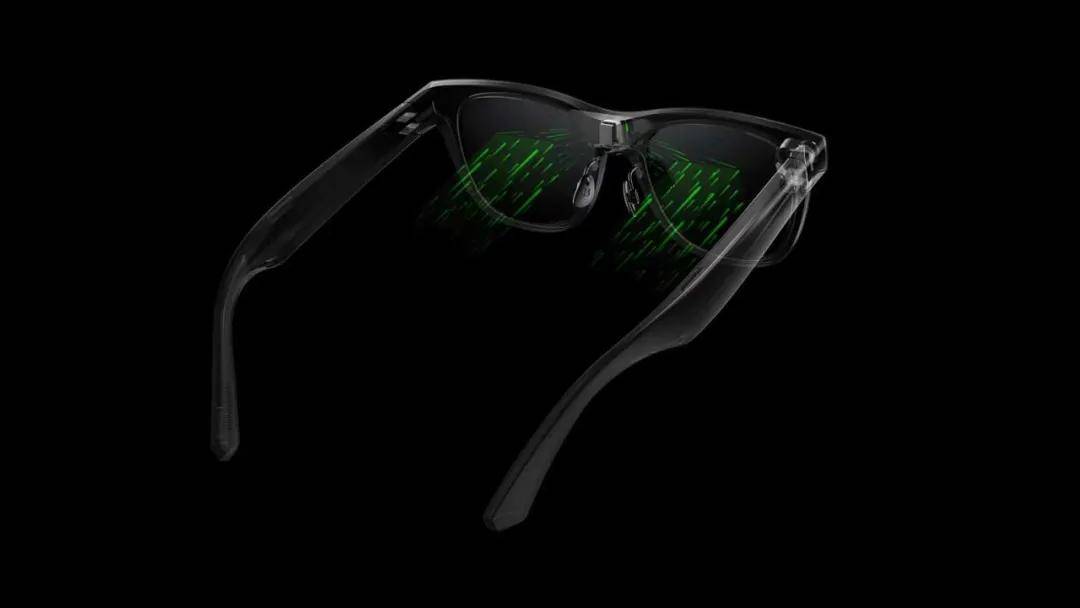
From a market perspective, major companies like Microsoft, Apple, and Facebook, when deploying AR display devices, have unanimously included diffractive light waveguide technology, seemingly confirming the technology's advancement and growth potential.
In September this year, Meta showcased an AR glasses prototype, Orion, using light waveguide technology, but with a cost of up to $10,000, it is not yet available for market sale.
As a leader in the AR industry, domestic manufacturer Rokid also recognized the importance of light waveguide technology early on. As early as 2021, Rokid launched Rokid Vision 2 using diffractive light waveguide technology and has consistently favored and invested in the research and application of this technology.
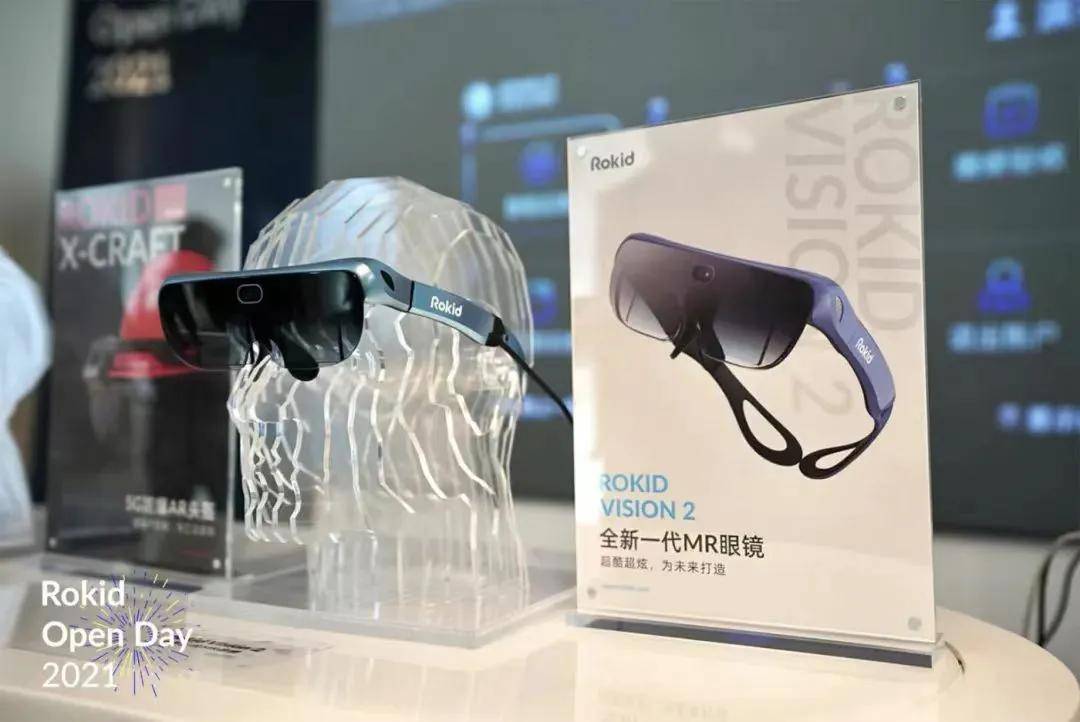
In the B-end market, Rokid took the lead, launching industry solutions such as X-Craft and Glass 2 for dozens of niche industries including oil and gas, manufacturing, automotive, and chemicals.
The release of Rokid Glasses this time signifies Rokid's transition from B-end accumulation to the C-end market.
Unlike Meta's Orion, this showcase is not merely Stay in, stay in the technical level. With the collaboration with BOLON glasses, Rokid Glasses indicates that Rokid now has the capability to be the first to market light waveguide technology products. At the conference, Misa revealed that Rokid Glasses will officially go on sale in the second quarter of 2025, priced at 2499 yuan.
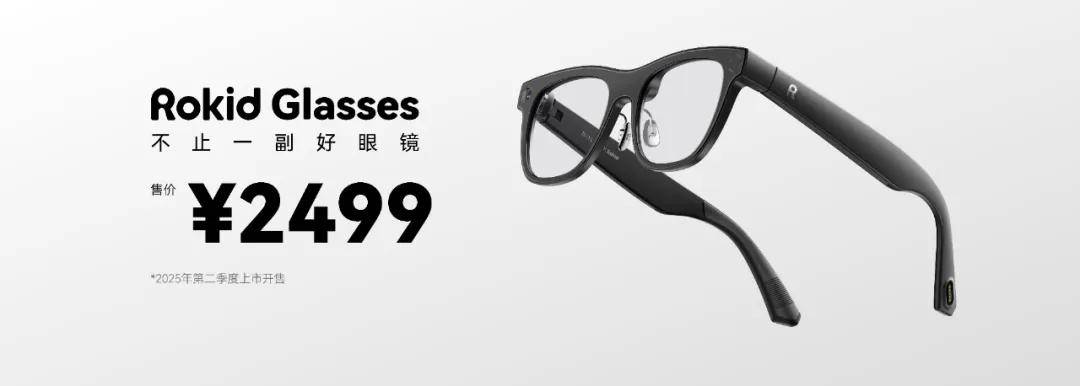
At the conference, Rokid's founder and CEO Misa also announced exciting news: the official launch of a special offer—paying just 9.9 yuan to obtain an F code worth 200 yuan. This campaign is now live on Rokid's official WeChat public account, and interested users can pre-order Rokid Glasses.
3. Expanding to Broader Markets
'Technology + Product' is the key to opening the door for AR glasses in the C-end consumer market, but it cannot be the decisive factor for consumers to purchase. A rich content ecosystem is crucial for AR glasses to remain irreplaceable.
As early technological hurdles were gradually overcome, the industry has consistently faced challenges of a lack of high-quality content and insufficient content supply.
It was not until overseas companies like Meta and domestic VR companies represented by Rokid proactively invested, building diverse content ecosystems around hardware and driving more developers into the industry, that the C-end market space gradually opened up.
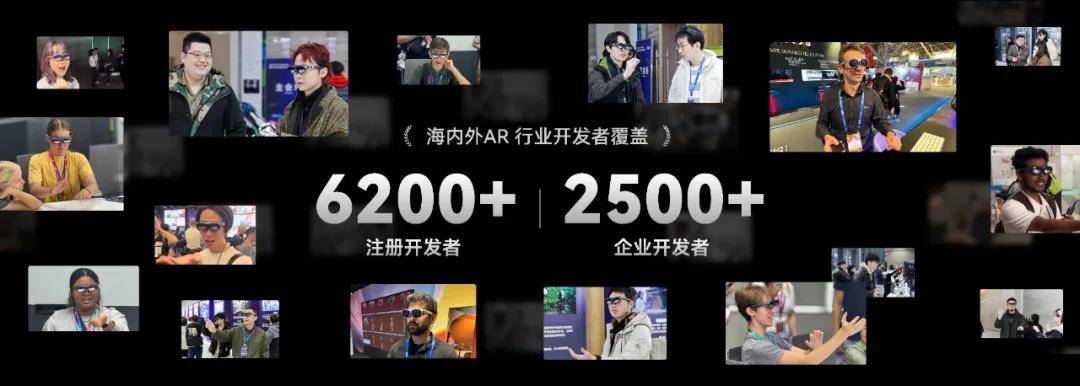
Over the past decade, Rokid has not only built a mature product system around AR glasses but also developed its own operating system, YodaOS, and collaborated with ecosystem partners to build a content ecosystem for AR glasses applications.
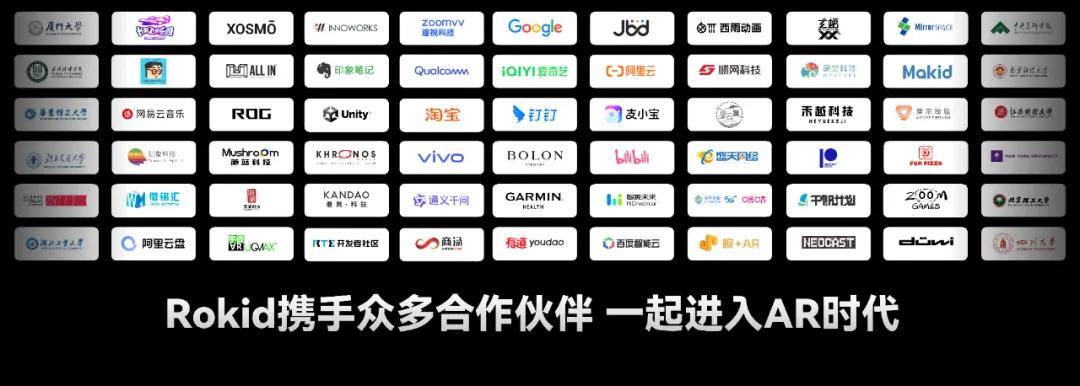
In the subsequent media communication meeting, Misa stated that the principle of Rokid's cooperation with partners is to let customers experience the product first. "Letting them truly understand, experience, and recognize our product is the foundation of all cooperation."
The attraction of product strength has allowed Rokid to invite many partners to this conference, where they further discussed ecosystem construction.
In office scenarios, Rokid explores new forms of future AR office collaboration with DingTalk. Fu Xujun, COO of DingTalk, shared at the conference that DingTalk has launched its AR version based on YodaOS-Master, supporting features like multi-screen connectivity and multi-instance single-application, helping DingTalk users achieve ultimate office efficiency within limited time, energy, and resources.

In the entertainment scene, Rokid has collaborated with iQIYI to explore new forms of future AR entertainment. Huang Shuangxi, General Manager of iQIYI's Innovative Terminal Business Unit, shared at the press conference that iQIYI has launched features such as spatial multi-screen, spatial interaction, and gimbal mode based on AR glasses, aiming to create an immersive viewing experience while reshaping the AR entertainment ecosystem.
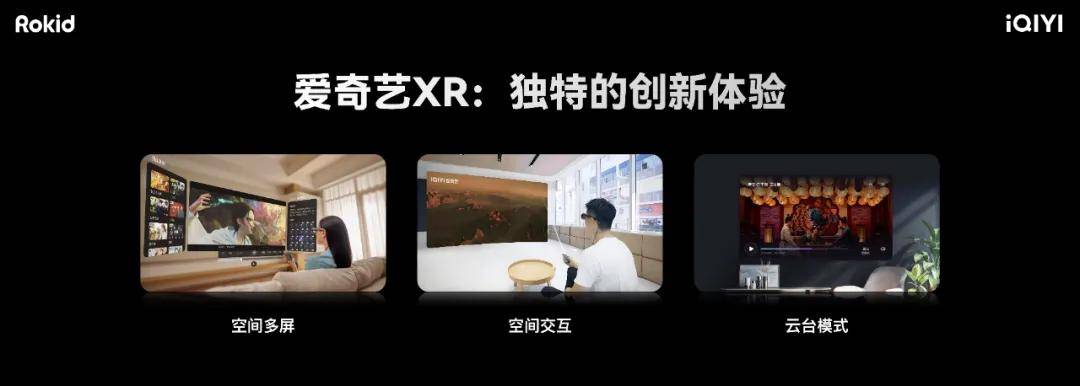
In daily life scenarios, Rokid and Taobao are exploring the integration of AR technology with shopping scenarios. Taobao has launched a 3D product browsing page for the first time, supporting 3D shopping.
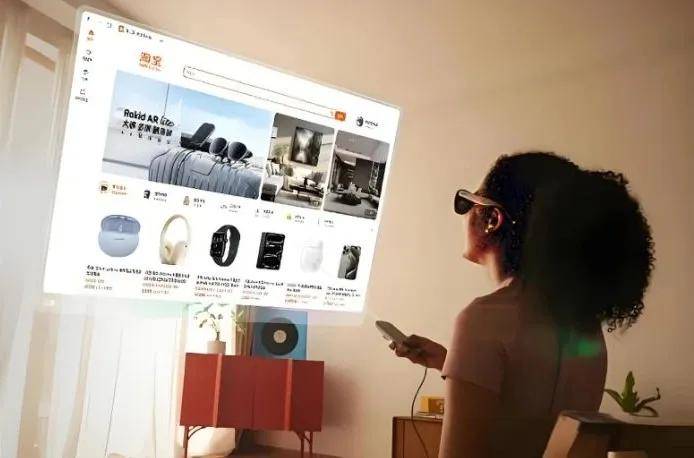
In educational and IP scenarios, Rokid has collaborated with NetEase Youdao and Bilibili to explore AR teaching and empower AR games. Additionally, in commercial scenarios, Rokid actively cooperates with the cultural tourism industry. For instance, through collaboration with the Suoxi Lake scenic area, it created the country's first digitally augmented night amusement park, "Suoxi Lake Magic Night".
As product forms evolve, Rokid's applications in entertainment, office work, education, IP, and other scenarios continue to expand. From this perspective, Rokid is indeed more akin to a system software company hidden behind hardware products.

It is worth mentioning that the design of Rokid Glasses' appearance in this new product was created by the fashion brand BOLON Eyewear.
BOLON Eyewear, based on ergonomic research and development, fully considers the technological functional requirements of the product and adjusts the eyeglass structure. It primarily selects lightweight, high-quality materials to ensure that the product is more comfortable and lightweight when worn, truly achieving a "fully equipped yet lightweight" design.
Recognition from BOLON Eyewear is just the beginning.
For a long time, anticipatory narratives have shrouded AR glasses, with people expecting them to become the next-generation computing platform on par with smartphones. However, many doubts have arisen during this long wait.
The emergence of Rokid Glasses has shown the market a perfect fusion of "technology, product, and ecosystem." This may become an important turning point for the AR glasses industry.








